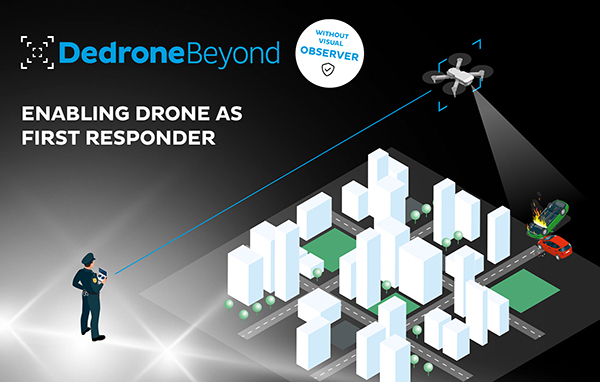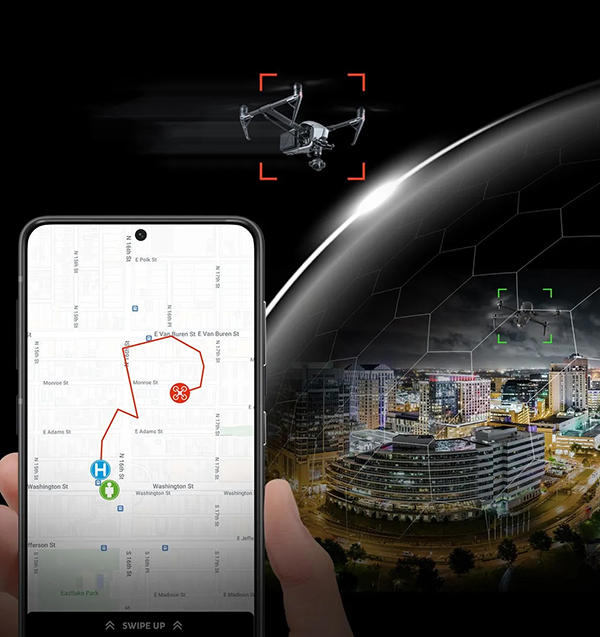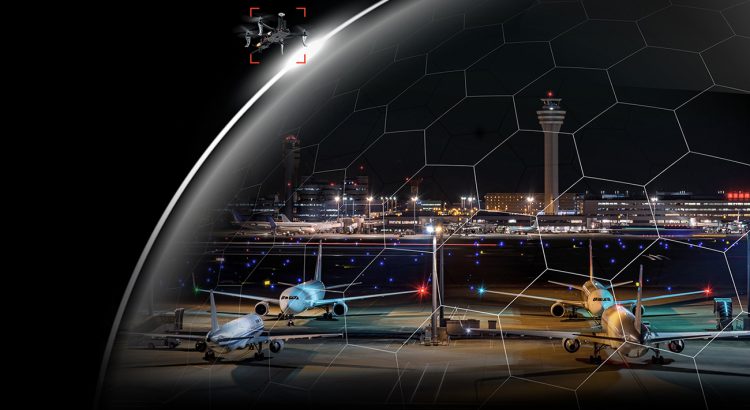Dedrone has announced the launch of DedroneBeyond, its solution to enable drone operations to fly beyond visual line of sight (BVLOS) for state, local, territorial and tribal (SLTT) law enforcement and emergency services when deploying drone as first responders (DFR). Powered by the same computer-vision-enabled, sensor-fusion AI that currently protects over 500 sites around the world, DedroneBeyond delivers complete airspace situational awareness. This solution is being developed and tested in partnership with others, including Axon Air powered by DroneSense, for safe drone operation, providing an infrastructure for the positive drone economy to emerge.Â

“Drones can provide more than just a birds-eye view of a situation; they can arrive at a scene faster than humans and then enable assessment of an emerging incident to provide critical information for law enforcement and first responders to make better decisions before sending in personnel. Today, this potential is hampered by the need to always have human eyes on a drone,” said Aaditya Devarakonda, CEO of Dedrone. “DedroneBeyond unlocks that potential and makes it easier for law enforcement across the country to implement scalable DFR programs. DedroneBeyond is a natural extension for Dedrone, leveraging the company’s deep knowledge and technology foundation for aircraft detection and multi-sensor fusion, to further expand its global leadership in airspace security.”
“Eliminating the need for human visual observers is the key to unlocking the value of DFR and bringing its benefits to a larger number of communities,” said Aydin Ghajar, General Manager of Axon Air. “We’re incredibly excited to add DedroneBeyond to the Axon Air offering and the value it can bring in combination with all the hardware, software, and professional services we offer to agencies to operate a lifesaving drone program successfully.”
To fly a drone BVLOS in the United States, the Federal Aviation Administration (FAA) must issue a certificate of authorization (COA) to the end user. To acquire a COA, an agency must show that its technology can reliably detect other aircraft to prevent mid-air collisions. DedroneBeyond layers Automatic Dependent Surveillance–Broadcast (ADS–B) detection into Dedrone’s existing premier detection and sensor-fusion technologies, technologies that have placed the company in a global leadership position for airspace security. By using a drone to assess a situation, law enforcement agencies can respond faster and be more resource efficient.
“Embracing innovation is at the core of our mission to enhance public safety. Our partnership with Dedrone and Axon Air on the evaluation of the DedroneBeyond solution represents a crucial step towards strengthening our DFR program,” said Michael J. Bouchard, Sheriff, Oakland County, Mich. Sheriff’s Office. “This collaboration opens the door to exploring BVLOS operations, offering the potential to transform the way we respond to emergencies and keep our community safe.”
DedroneBeyond joins Dedrone’s suite of smart airspace security solutions, all of which leverage DedroneTracker.AI, the company’s global-leading command and control (C2) airspace security platform. With sophisticated AI models, the platform performs true sensor fusion to accurately monitor a drone’s flight path and behavior. Dedrone additionally offers this C2 capability across every kind of setting depending on customer needs, including DedroneCityWide, for zero-install drone detection and monitoring across wide areas, DedroneFixedSite, drone detection for critical infrastructure locations and mobile kits designed for specific situations, DedroneTactical for agile expeditionary environments and DedroneRapidResponse for mobile drone detection.

Most recently, DedroneCityWide has expanded to over 50 cities in the US and abroad, including Foxborough, MA; Honolulu, HI; Salt Lake City, UT; Jersey City, NJ; San Antonio, TX; Newark, NJ; Pittsburgh, PA and Indianapolis, IN. Dedrone is now able to offer protection from the threat of drones to over 50% of the US population. Dedrone is implemented across 30 countries and is used by five of the G-7 nation governments; 190 critical infrastructure sites; 30 airports; 60+ stadiums; 15+ US federal entities and 20+ non-US governments. The company actively provides counterdrone solutions for some of the most high-profile events around the world, working closely with over 120 public safety agencies globally.



